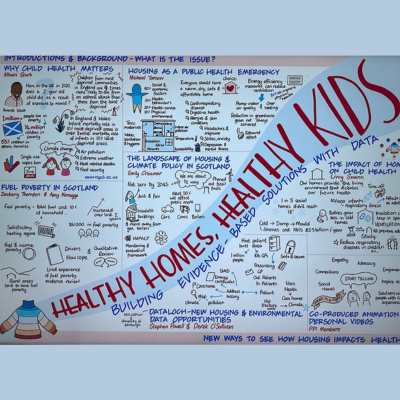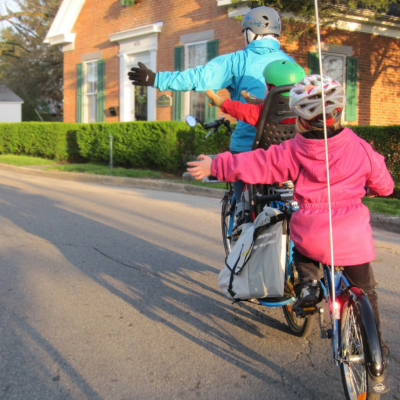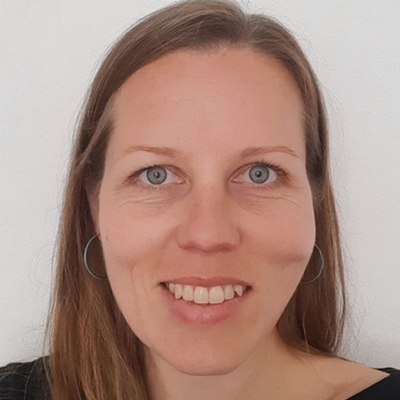Edinburgh event brings together 150+ cross-sectoral stakeholders to explore the challenge of tackling children's respiratory illness in Scotland.
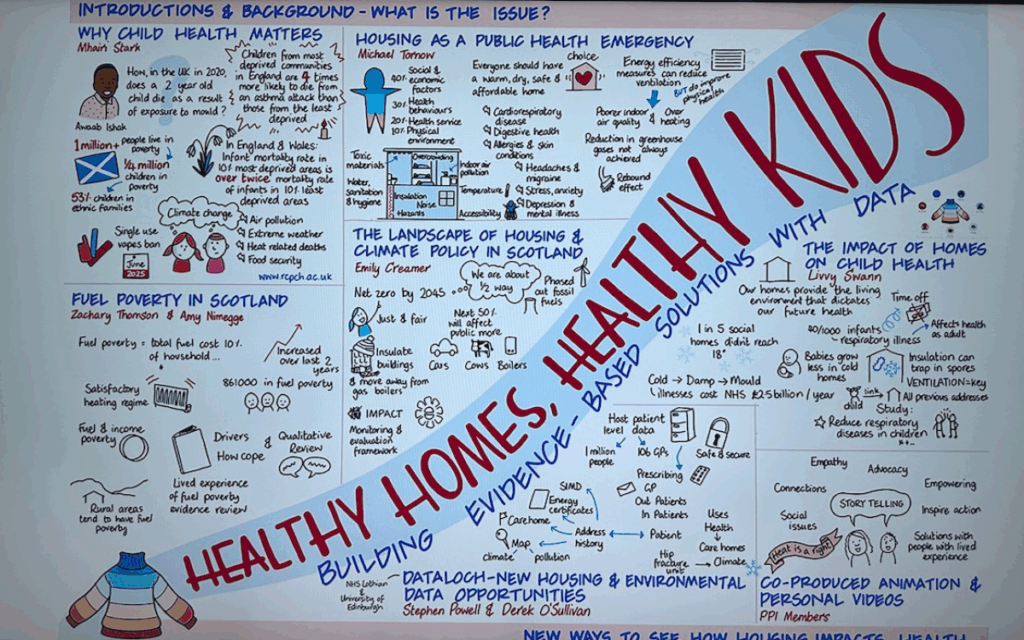
UrbanTide is playing a pivotal role in a pioneering study that’s linking cold, damp homes with children’s respiratory health in Scotland for the first time. By linking energy data with health data, the aim is to uncover vital insights that could reshape how we tackle respiratory illnesses in children by building evidence-based solutions.
The Homes, Heat and Healthy Kids Study has had a lot of cross-sector interest, including from Central and Local Government, the NHS, retrofit compaines and housing associations. This month, Dr Olivia Swann – Senior Clinical Research Fellow and Honorary Consultant in Paediatric Infectious Disease, who is leading the project – held a public event at the Usher Institute in Edinburgh to pull stakeholders together and gain a deeper insight into the challenge ahead.
What was initially pitched as as an event for twenty people grew to a packed room of 150+ attendees, clearly demonstrating the urgency of the study.
The link between poverty and respiratory illness in children
In a country where over a quarter of a million children live in poverty and more than 860,000 households experience fuel poverty, Dr. Olivia Webb's research shines a critical light on an often-overlooked connection: the relationship between cold, damp homes and children's respiratory health in Scotland.
Data presented at the event revealed that poverty levels remain stubbornly high in Scotland, with over a million people living below the poverty line. Children from the most deprived areas in England are also four times more lively to die from an athsma attack than those from the least deprived.
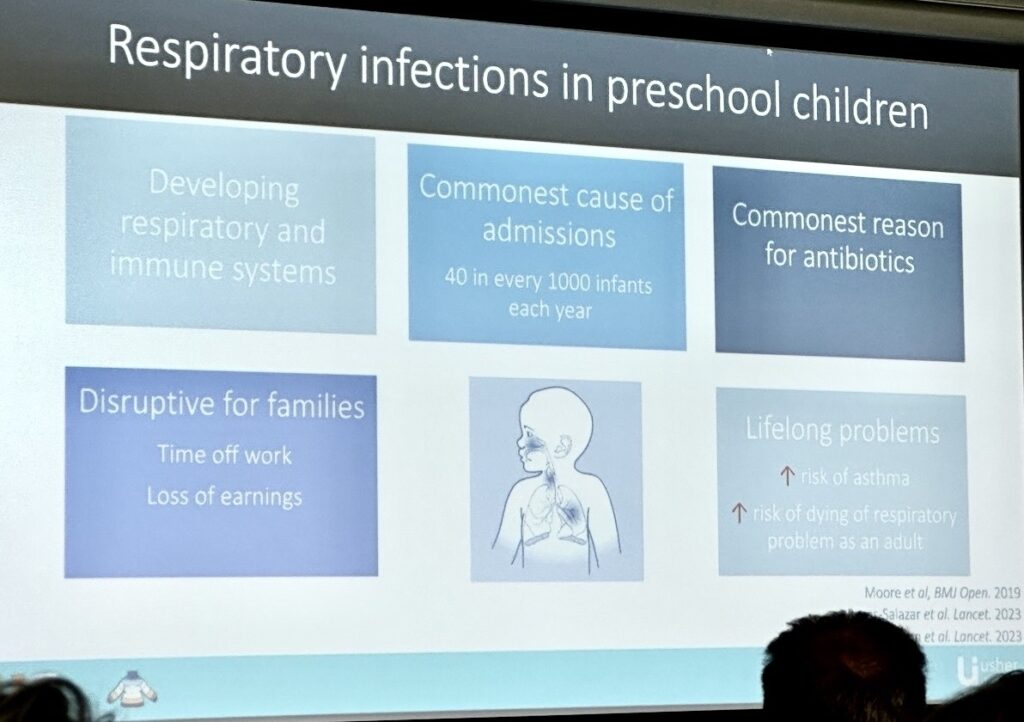
The impact of housing on children’s health
Dr. Webb's research explores how these socioeconomic factors directly impact children's respiratory health, and how housing can make us healthier.
The connection between housing and health is clear and multifaceted:
- Cold, damp homes breed respiratory problems: Inadequate heating and poor ventilation create environments where mold and dampness flourish, triggering or exacerbating respiratory conditions in children.
- Energy efficiency paradox: While retrofitting homes for energy efficiency seems like an obvious solution, Dr. Webb's findings reveal unintended consequences. Making homes more air-tight without proper ventilation strategies can trap indoor pollutants and moisture, potentially worsening air quality.
- Behavioral misalignment: Even when energy-efficient systems are installed, residents don't always understand how to use them effectively, limiting their potential benefits.

One thing Dr. Swann's study and the event strongly highlights is that Scotland needs collective action to improve life expectancy and reduce health inequalities.
The Scottish Government is developing an evaluation framework for a just transition that’s linked to the National Performance Indicators. It aims to assess the impact of net zero policies on key issues of equality. But to do this, there are huge data gaps to fill.
Dr. Webb’s research points to significant data gaps that hamper effective policy-making, particularly around the differential impacts of energy efficiency measures across various populations and housing types. Collaborative, cross-sectory approaches like this project are therefore exactly what we need.
Towards Solutions: The Homes, Heat and Healthy Kids Study
While there are no clear solutions yet, uncovering the scale and sources of the problem are the crucial first step. Dr. Webb's research aims to:
- Raise awareness of how cold, damp homes affect child health, particularly respiratory conditions.
- Explore unintended consequences of energy efficiency measures to ensure they don't inadvertently worsen indoor air quality.
- Develop new data collection methods to better understand the complex interactions between housing, energy use, and health outcomes.
- Inform evidence-based policies that can bring about meaningful change.
With Scottish Parliament's child poverty reduction targets approaching—and interim targets likely missed—Dr. Webb's research underscores the urgent need for coordinated action. The health impacts of substandard housing on children represent not just a current crisis but a potential generational burden if left unaddressed.
By bringing together insights from pediatricians, housing experts, and affected communities, this study aims to "#ShiftTheDial" on how we understand and address the interconnected challenges of child poverty, fuel poverty, and respiratory health. Only through such integrated approaches can Scotland hope to create healthier environments for all its children, regardless of their socioeconomic circumstances.
Sign up to the UrbanTide newsletter to keep up with the progress of this study.
